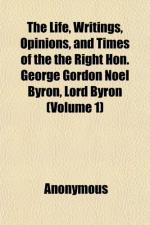|
This section contains 7,186 words (approx. 24 pages at 300 words per page) |

|
SOURCE: "Speed and Space: Byron," in Sexual Personae: Art and Decadence from Nefertiti to Emily Dickinson, Vintage Books, 1991, pp. 347-64.
In the following essay, which was first published in 1990, Paglia regards Byron as instrumental in the development of the phenomenon of the male sex symbol.
The second generation of English Romantic poets inherited the achievement of the first. Byron, Shelley, and Keats read and absorbed Wordsworth and Coleridge's poems and gave them new form. The younger men created the myth of the doomed Romantic artist. All three went into exile and died young, in pagan Italy and Greece. Publicity and fashion made them sex-heroes of European high society: they were real-life sexual personae, as Blake, Wordsworth, and Coleridge were not. The poems of Byron, Shelley, and Keats are theatrical gestures of self-definition. The first Romantic generation released the psychic energy in which the second swam and sometimes drowned...
|
This section contains 7,186 words (approx. 24 pages at 300 words per page) |

|


